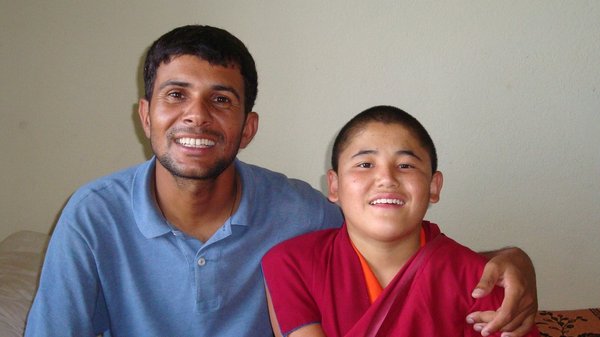- About Dhulikhel
Dhulikhel is a naturally and culturally rich destination for tourists seeking to escape the hustle and bustle of Kathmandu city and an ideal stop-off point on your way to the Tibetan Border. Straddling on a ridge with breathtaking views of the eastern Himalaya, the town is easily accessed from Kathmandu by the Arniko Highway, now a modern road; it was at one time an ancient trade route, with Dhulikhel being a main trading hub between Kathmandu, Tibet and India.
Historically, Dhulikhel is a Newar settlement. The Newars are an ethnic group of Nepal who originally inhabited the Kathmandu Valley. They are renowned for their outstanding craftsmanship and woodcarving skills which is evident in all the traditional homes around the old town. Newars are also perhaps the oldest and most traditional of Nepal’s ethnic groups and have a culture strongly based on religion, celebrated with a calendar of festivals that would even put New Orleans to shame.
Aside from the breathtaking panoramic views of the Himalaya stretching from Langtang to Everest and beyond, there are plenty of interesting sites to see in the town. where you can loose yourself to time in the tangle of cobbled laneways, discover ancient houses with sagging wooden frame works, intricate carvings, hidden temples and thriving market squares. Discover the color and culture of this vibrant place as you wander past old men smoking pipes, women hand spinning wool, traditional wood carving workshops and hidden gardens through ancient archways. To the east of the town, past a local art gallery you can find the picnic ground and rest awhile before climbing the “Hazar Sindhi” (one thousand steps) to the Kali Temple, where you can be inspired by the snow capped peaks rearing above the steeply terraced foothills
- About Namobuddha
 |
| Welcome to Namo Buddha |
Namo Buddha or Takmo Lüjin (Wyl. stag mo lus sbyin) is an important Buddhist pilgrimage site of Nepal, and one of the three main stupas of the Kathmandu valley. Situated about 40 km to the south east of Kathmandu city, the stupa built on the bones and hair of prince Mahasattva (Tib. Semchen Chenpo), stands on the slopes of the Gandha Malla hill.
According to the Jatakas and several sutras, Mahasattva was one of Buddha Shakyamuni's former incarnations. He was the youngest of the three sons of king Maharatha. One day as the three brothers were walking through the forest, they saw a tigress with the five cubs she had given birth to. She was so hungry she could hardly move. The three princes went away, but Mahasattva decided to go back and started to cut his flesh to give it to the tigress to eat. When his brothers went to look for him they found only his bones and hair. The stupa was built on top of these remains.
Walking up the hill from the stupa, one can reach a place where the scene of the Buddha giving his body to the tigress is engraved in stone. According to the oral tradition, this is the actual place where the Buddha gave his body.
Following the ridge to a second summit on the same hill, there is also a small stupa which is said to mark the den of the tigress. There, pilgrims lie down on the ground as if giving their bodies, and hair and pieces of cloth are hung to the branches of the tree for protection.
The Tibetan name Takmo Lujin derives from the events that took place on the site (stag mo means 'tigress', lus 'body', and sbyin 'to give'). Local people call it Namo Buddha (Lit. 'Homage to the Buddha!'). Because the region was infested with tigers, the local people wouldn't call it by its actual name, which contains the word 'tiger', and so, as a way to protect themselves, they got into the habit of calling it “Namo Buddha.”
On the eastern side of the hill is the monastic complex built by Khenchen Thrangu Rinpoche—Thrangu Tashi Yangtse Monastery.
Day Trip in Dhulikhel Namobuddha and Panauti
Drive early morning to Dhulikhel around 30KM and visit Dhulikhel and Hike to Namobuddha and Visit Namobuddha and ,hike down to Panauti and drive back to Kathmandu.
 |
| Panauti Temple |
 |
| Namo Buddha |
 |
| Namo Buddha |
 |
| History of Namo Buddha |
 |
| Bhakti Trekking Guide |
 |
| Bhakti Trekking guide in Namo buddha |
No comments:
Post a Comment